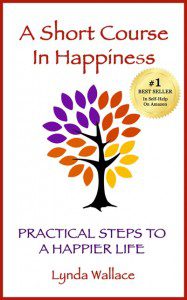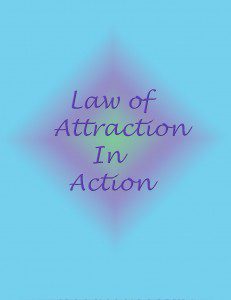 Lynda Wallace After twenty years as a highly successful executive with Johnson & Johnson, where she was responsible for a $1B portfolio of businesses including Band-Aid, Neosporin and Purell, Lynda Wallace chose to change careers to pursue her passion. She now helps individuals and groups apply proven insights and techniques to achieve greater happiness and success in their lives, families, careers, and businesses. Lynda holds an MBA from the Wharton School of the University of Pennsylvania and is a certified positive psychology coach. She is also a sought-after speaker and the author of the #1 Amazon self-help bestseller, A Short Course in Happiness: Practical Steps to a Happier Life.
Lynda Wallace After twenty years as a highly successful executive with Johnson & Johnson, where she was responsible for a $1B portfolio of businesses including Band-Aid, Neosporin and Purell, Lynda Wallace chose to change careers to pursue her passion. She now helps individuals and groups apply proven insights and techniques to achieve greater happiness and success in their lives, families, careers, and businesses. Lynda holds an MBA from the Wharton School of the University of Pennsylvania and is a certified positive psychology coach. She is also a sought-after speaker and the author of the #1 Amazon self-help bestseller, A Short Course in Happiness: Practical Steps to a Happier Life.
What Will Really Make You Happy??
Research Reveals 4 Common Misconceptions
by Lynda Wallace
The idea of a happy and meaningful life has become unnecessarily complicated in some circles. Happiness has been appropriately cited as a goal in political debates on issues from taxation to the social safety net to marriage equality, but the debate is often confused.
Some people claim that happiness is all in your DNA or bank account. The truth is that happiness is largely a matter of everyday choices and actions. There are straightforward, well-researched and effective things every one of us can do to create greater happiness in our lives and in the lives of those we care about.
The essential elements of a happy life are not mysterious. Research shows that the happiest people do four basic things that make the difference: they focus on what is good and positive in their lives; cope effectively with life’s inevitable challenges; develop strong relationships; and pursue meaningful goals.
We can all become happier by putting our efforts into these areas. One of the first steps we can take is to get past some of the common misperceptions about happiness that can stand in our way.
• Misconception #1: Happiness is about getting the big things right. It’s natural to think that if we were suddenly rich, beautiful and living on the beach somewhere, we’d be happy. But that type of good fortune turns out to have a surprisingly small impact on happiness. The happiest people are most often not those in the most enviable circumstances, but those who cultivate positive emotional outlooks and actions. So how can we do it? Take concrete steps to practice optimism, gratitude, kindness and self-compassion in your everyday life. The cumulative effect of those everyday choices can have a tremendous impact on how you experience your life.
• Misconception #2: Happy people suppress negative emotions. Happy people actually experience sadness, grief, worry and other so-called negative emotions nearly as frequently as unhappy people do. The difference is what happens when those feelings occur. Happier people are generally able to experience negative feelings without losing hope for the future. They give themselves permission to feel sad, angry, or lonely, but they remain confident that things will get better. As a result, their sadness progresses into hope and action rather than regressing into anxiety and despair.
• Misconception #3: Pursuing happiness is self-centered. The strongest of all conclusions drawn by researchers into emotional well-being is that our happiness is determined more by our relationships with other people than by any other single factor. The happiest people build their lives around good, trusting relationships. If other priorities are getting in the way of your relationships take steps to shift the balance back to where it will really make a difference.
• Misconception #4: I’ll be happy when I achieve my goals. Have you ever noticed that when someone wins the Super Bowl or an Academy Award, or when you achieve a long-sought ambition, that wonderful sense of accomplishment and happiness seems to fade faster than you’d expect? That’s just the way our brains work. Committed goal pursuit is one of the keys to a happy life, but most of the happiness we get from striving for goals comes while we’re making progress toward them, not after we achieve them. That’s why it’s so important that we choose goals that are in synch with what we love and value, and that we make a conscious effort to enjoy them along the way.
***************
Join the Self-Love Movement™! Take the 31 Days of Self-Love Commitment and get my book, How Do I Love Me? Let Me Count the Ways for free at http://howdoiloveme.com. Read my 2013 31 Days of Self-Love Posts HERE. Join the Self-Love Movement™! on Facebook.
Please leave comments under my posts so we can stay connected.

